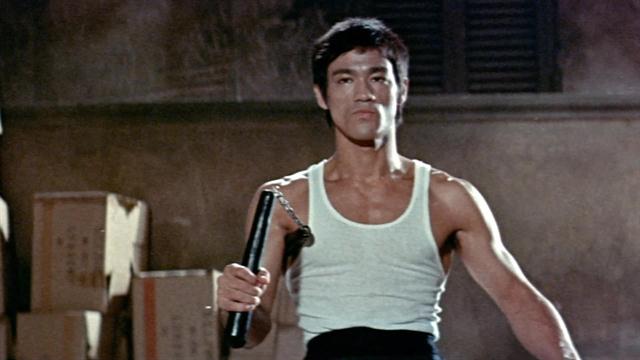← Back to Reviews
in
#517 - The Way of the Dragon
Bruce Lee, 1972

A young man travels from Hong Kong to Rome in order to help protect a Chinese restaurant from local gangsters.
Bruce Lee is of course a legend in the realm of martial arts and his films usually serve as evidence of just how much of a well-oiled fighting machine he can be with little depth beyond that. The Way of the Dragon does come across as a generally rough film as a result, with its plot depositing Lee's character in Rome under the pretense of helping out with running a Chinese restaurant. As such, the first third of the film plays out like a fish-out-of-water comedy as Lee must adapt to unusual Italian customs (including being unexpectedly seduced by a local woman) and thus it takes a while for the actual fighting to start. The fighting comes about as Lee stumbles into the midst of a conflict where the restaurant's staff are being shaken down by a local mob. With Lee naturally being extremely skilled at fighting, his arrival becomes the turning point in this turf war as he inspires the restaurant staff to fight back against the mob, who then resort to outsourcing to foreign martial artists in order to counter him.
One of the main reasons that I never quite loved watching Lee movies is that the man's prowess, despite being impressive to witness, comes at the expense of the rest of the film. The rather comedic nature of the film's conflict and non-action scenes are rather bare-bones and not all that humourous to watch, making the film feel awfully padded as a result. Of course, it's sufficiently compensated for by the action. All the hallmarks of classic 1970s martial arts are here - the grainy cinematography full of crash-zooms and gliding dolly shots, the chintzy background score, etc. - and Lee always makes for a magnetic presence. The film may take a while to get going, but when it does it's definitely worth watching, especially when the mob gets desperate and starts hiring other martial artists to take on Lee. This provides the film with its most memorable moment, when Lee fights none other than Chuck Norris (whose role as an all-American villain is naturally given a guitar-twanging leitmotif similar to the one that accompanied Henry Fonda's character in Once Upon a Time in the West) within the ruins of the Colosseum. The resulting scene lasts about ten minutes and is definitely enough to sway one's opinion of the film from middling to good. The Way of the Dragon isn't that much of a classic, but it's got just enough good moments to not feel like a waste of time.
Bruce Lee, 1972

A young man travels from Hong Kong to Rome in order to help protect a Chinese restaurant from local gangsters.
Bruce Lee is of course a legend in the realm of martial arts and his films usually serve as evidence of just how much of a well-oiled fighting machine he can be with little depth beyond that. The Way of the Dragon does come across as a generally rough film as a result, with its plot depositing Lee's character in Rome under the pretense of helping out with running a Chinese restaurant. As such, the first third of the film plays out like a fish-out-of-water comedy as Lee must adapt to unusual Italian customs (including being unexpectedly seduced by a local woman) and thus it takes a while for the actual fighting to start. The fighting comes about as Lee stumbles into the midst of a conflict where the restaurant's staff are being shaken down by a local mob. With Lee naturally being extremely skilled at fighting, his arrival becomes the turning point in this turf war as he inspires the restaurant staff to fight back against the mob, who then resort to outsourcing to foreign martial artists in order to counter him.
One of the main reasons that I never quite loved watching Lee movies is that the man's prowess, despite being impressive to witness, comes at the expense of the rest of the film. The rather comedic nature of the film's conflict and non-action scenes are rather bare-bones and not all that humourous to watch, making the film feel awfully padded as a result. Of course, it's sufficiently compensated for by the action. All the hallmarks of classic 1970s martial arts are here - the grainy cinematography full of crash-zooms and gliding dolly shots, the chintzy background score, etc. - and Lee always makes for a magnetic presence. The film may take a while to get going, but when it does it's definitely worth watching, especially when the mob gets desperate and starts hiring other martial artists to take on Lee. This provides the film with its most memorable moment, when Lee fights none other than Chuck Norris (whose role as an all-American villain is naturally given a guitar-twanging leitmotif similar to the one that accompanied Henry Fonda's character in Once Upon a Time in the West) within the ruins of the Colosseum. The resulting scene lasts about ten minutes and is definitely enough to sway one's opinion of the film from middling to good. The Way of the Dragon isn't that much of a classic, but it's got just enough good moments to not feel like a waste of time.
